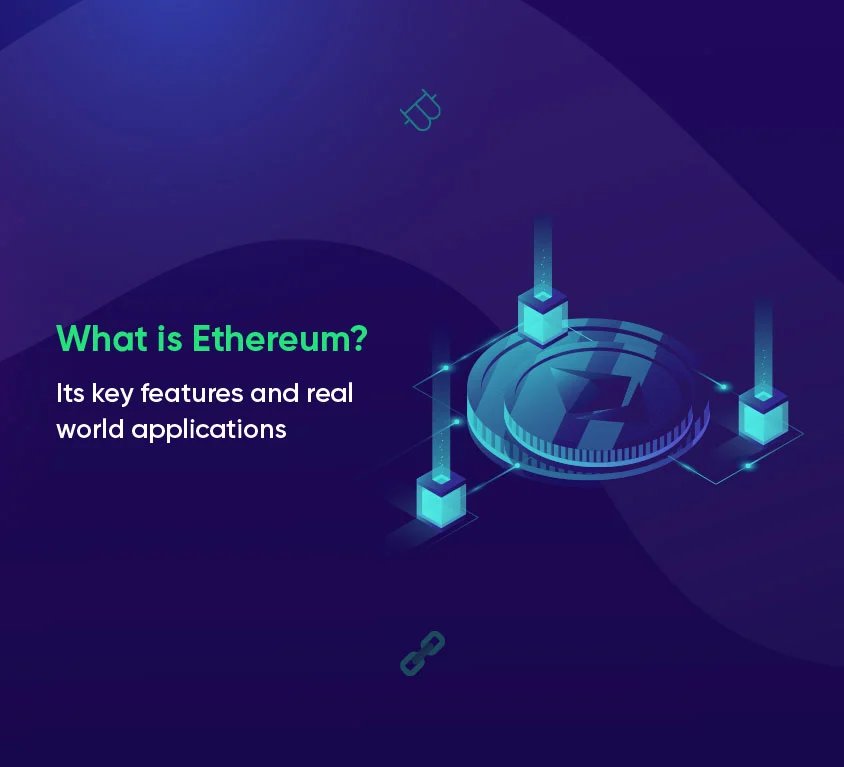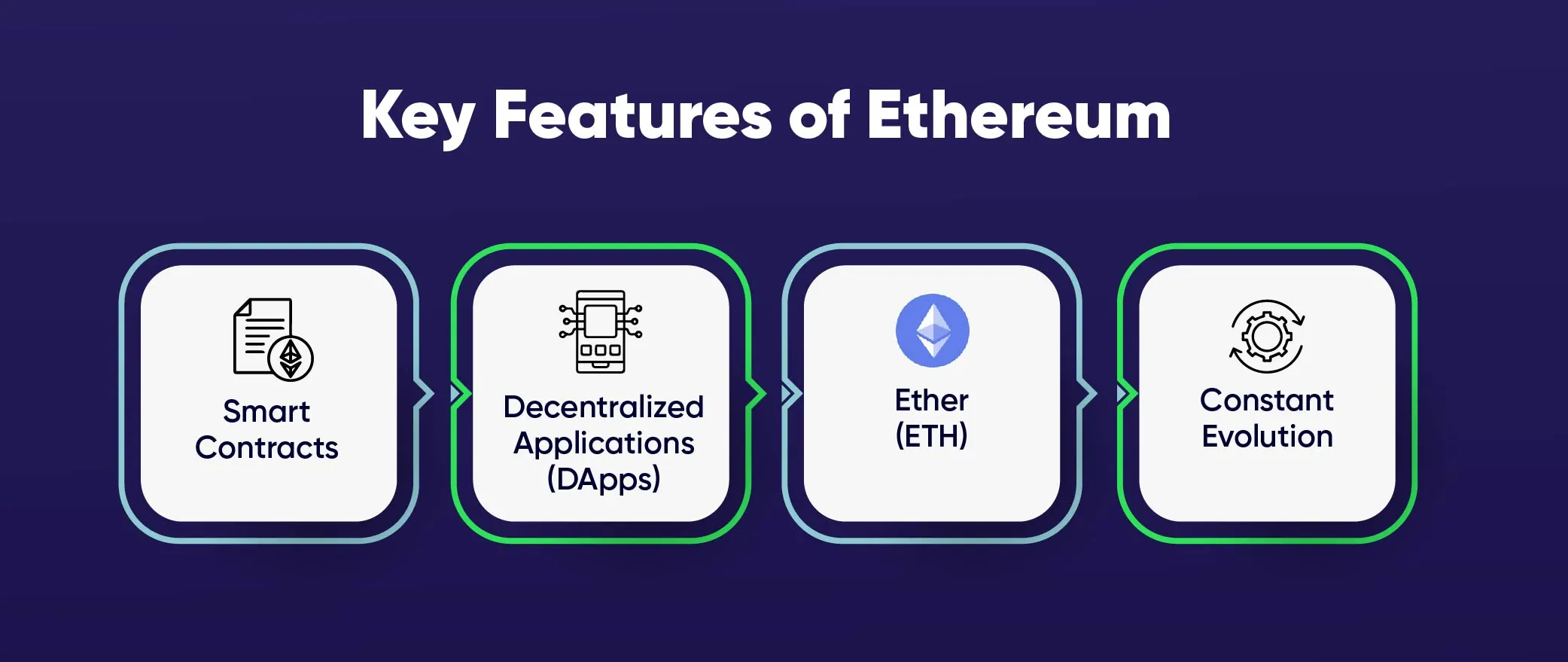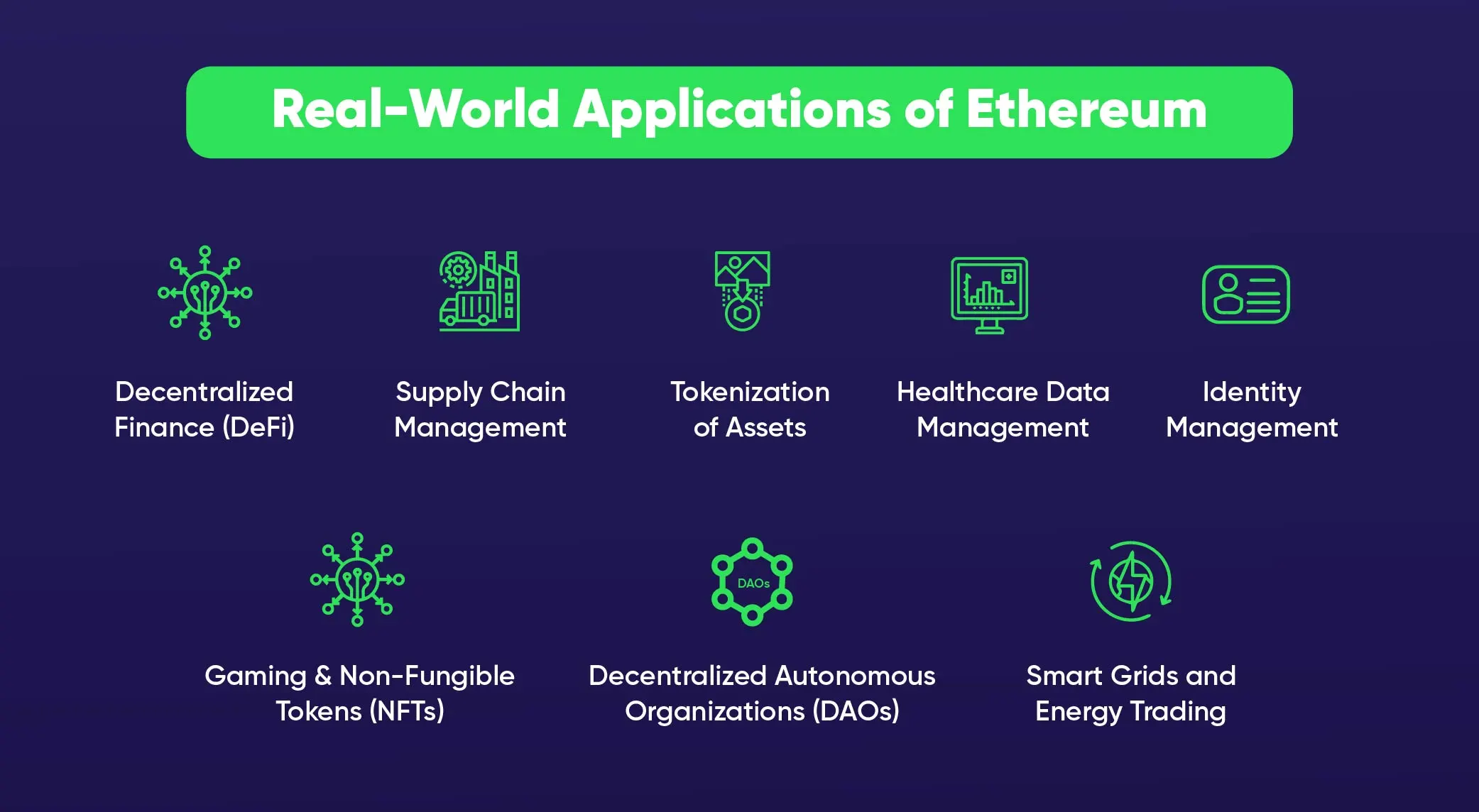
Introduction
Blockchain & Web3 Services Trusted By Leaders
- Develop innovative solutions using our state-of-the-art blockchain expertise.
- Achieve accelerated growth with robust & scalable Web3 consulting.
- Unlock 360-degree security with our top-rated blockchain development.
What is Ethereum? Its Key Features and Real World Applications
The blockchain revolution started with Bitcoin in 2009, demonstrating the potential of a decentralized digital currency system. However, challenges like Proof-of-Work consensus and scalability issues led to the need for a new phase of evolution. In 2015, Vitalik Buterin envisioned Ethereum, which introduced smart contracts, elevating blockchain’s purpose beyond transactions and introducing decentralized applications. Ethereum broke into the world of blockchain which has significantly impacted decentralized applications and smart contracts. This blog explores What is Ethereum, its key features, workings, real-world applications, and future.What is Ethereum?
Ethereum is considered a powerhouse blockchain for its numerous features for all use cases empowering decentralization. In technical terms, Ethereum is a decentralized, open-source blockchain platform designed to facilitate the creation and execution of smart contracts and decentralized applications (DApps). Unlike Bitcoin, which primarily serves as a digital currency, Ethereum’s blockchain operates as a global, decentralized computer that can execute code.Key Features of Ethereum
Let’s have a technical insight into Ethereum’s key features;
1. Smart Contracts
Ethereum’s smart contracts are powered by the Ethereum Virtual Machine (EVM), a runtime environment that executes bytecode. Contracts are written in high-level programming languages like Solidity and then compiled into EVM bytecode. Moreover, Smart contracts run on every node in the Ethereum network. This decentralized execution ensures that the contract’s logic is consistently applied across all participants, eliminating the need for a centralized authority.
2. Decentralized Applications (DApps)
Ethereum’s DApps leverage a peer-to-peer network of nodes to operate. Each node in the network maintains its copy of the blockchain and executes the DApp’s logic locally, fostering a distributed and transparent system. Furthermore, The data associated with DApps is stored on the Ethereum blockchain, providing immutability and transparency. Decentralized storage solutions, such as InterPlanetary File System (IPFS), are often integrated for large-scale data.
3. Ether (ETH)
Ether serves as an incentive mechanism within the Ethereum network. Participants, known as miners in a Proof-of-Work system, receive ETH as compensation for validating transactions and executing smart contracts. However, transactions and smart contract executions require a computational resource known as “gas.” Users pay gas fees in ETH to compensate miners for their computational efforts. This mechanism prevents network abuse and ensures efficient resource allocation.
4. Constant Evolution
Ethereum is not a static entity; it undergoes continuous upgrades to enhance scalability, security, and functionality. The transition from Ethereum 1.0 to Ethereum 2.0 is a testament to its commitment to innovation.
How Does Ethereum Blockchain Work?
- Ethereum’s decentralized network comprises nodes, each replicating the entire blockchain. As a result, this redundancy ensures that even if some nodes fail or act maliciously, the network remains robust.
- The nodes communicate with each other to synchronize the blockchain. Consensus protocols, such as GHOST (Greedy Heaviest Observed Subtree), help nodes agree on the valid state of the blockchain, maintaining a single version of the truth.
- Ethereum’s move from Proof-of-Work (PoW) to Proof-of-Stake (PoS) is a pivotal shift. PoS replaces miners with validators who are chosen to create new blocks based on the amount of Ether they “stake” or lock up as collateral. This consensus mechanism enhances scalability and reduces the environmental impact of mining.
- Validators are selected randomly to propose and validate new blocks. The selection process is influenced by the amount of Ether staked and other factors, ensuring a fair and secure network.
- In the PoW era, miners competed to solve complex mathematical puzzles, requiring significant computational power. The first miner to solve the puzzle added a new block to the blockchain and was rewarded with Ether.
- With Ethereum 2.0, the PoS consensus introduces validators who are chosen to propose and validate new blocks based on their staked Ether. This transition reduces energy consumption, making the network more sustainable while maintaining security and decentralization.
Real-World Applications of Ethereum: Transforming Industries
For those who are unaware of what is Ethereum, it is a blockchain platform full of versatility that extends far beyond cryptocurrency, fostering a paradigm shift in how industries operate. Here are real-world applications where Ethereum is making a substantial impact:
- Decentralized Finance (DeFi): Ethereum’s smart contracts enable the creation of decentralized financial instruments such as loans, stablecoins, and decentralized exchanges. DeFi platforms leverage Ethereum’s programmability to automate complex financial processes without intermediaries.
- Supply Chain Management: Ethereum’s blockchain provides an immutable and transparent ledger, making it ideal for supply chain applications. It enhances traceability by recording every transaction in a tamper-resistant manner, reducing fraud and ensuring the authenticity of products.
- Tokenization of Assets: Ethereum facilitates the tokenization of traditionally illiquid assets like real estate and art. Through tokenization, these assets can be divided into tradable fractions, democratizing access to investments and creating more liquid markets.
- Decentralized Autonomous Organizations (DAOs): Ethereum enables the creation of DAOs, organizations governed by smart contracts and community voting. These decentralized entities operate transparently, allowing members to participate in decision-making without traditional hierarchical structures.
- Identity Management: Ethereum provides a platform for decentralized identity solutions. Users can have greater control over their personal information, sharing only what is necessary without relying on central authorities, enhancing privacy and security.
- Gaming and Non-Fungible Tokens (NFTs): Ethereum powers the creation of NFTs, unique digital assets representing ownership of in-game items, characters, or land. This innovation transforms the gaming industry by allowing players true ownership of their digital possessions.
- Healthcare Data Management: Ethereum’s blockchain can be utilized for secure and interoperable health data management. Patients have more control over their records, and healthcare providers can access real-time, accurate information.
- Smart Grids and Energy Trading: Ethereum’s smart contracts enable peer-to-peer energy trading in smart grids. Consumers can directly buy and sell excess energy without the need for intermediaries, fostering a more efficient and decentralized energy market.
Examples of Ethereum Application
Ethereum, the world’s second-largest blockchain platform after Bitcoin, has revolutionized various industries with its decentralized and secure technology. Beyond just facilitating cryptocurrency transactions, Ethereum’s potential extends to numerous applications, from finance and supply chain management to gaming and digital art. Let’s explore some of the most exciting examples of how Ethereum is being used to create innovative solutions:
- Uniswap: Uniswap is a decentralized exchange (DEX) built on Ethereum, allowing users to swap various ERC-20 tokens directly from their wallets. It operates using automated market maker (AMM) algorithms and smart contracts, eliminating the need for traditional order books.
- CryptoKitties: CryptoKitties is a blockchain-based game where players can buy, sell, and breed unique virtual cats. Each CryptoKitty is represented as an NFT on the Ethereum blockchain, providing true ownership and scarcity of in-game assets.
- MakerDAO: MakerDAO is a decentralized autonomous organization (DAO) on Ethereum that issues the stablecoin DAI. Users can collateralize their assets to generate DAI through smart contracts, contributing to the decentralized finance ecosystem.
- Decentraland: Decentraland is a virtual world built on the Ethereum blockchain, where users can buy, sell, and build on virtual land parcels. The ownership of these virtual lands is represented as non-fungible tokens (NFTs) on Ethereum.